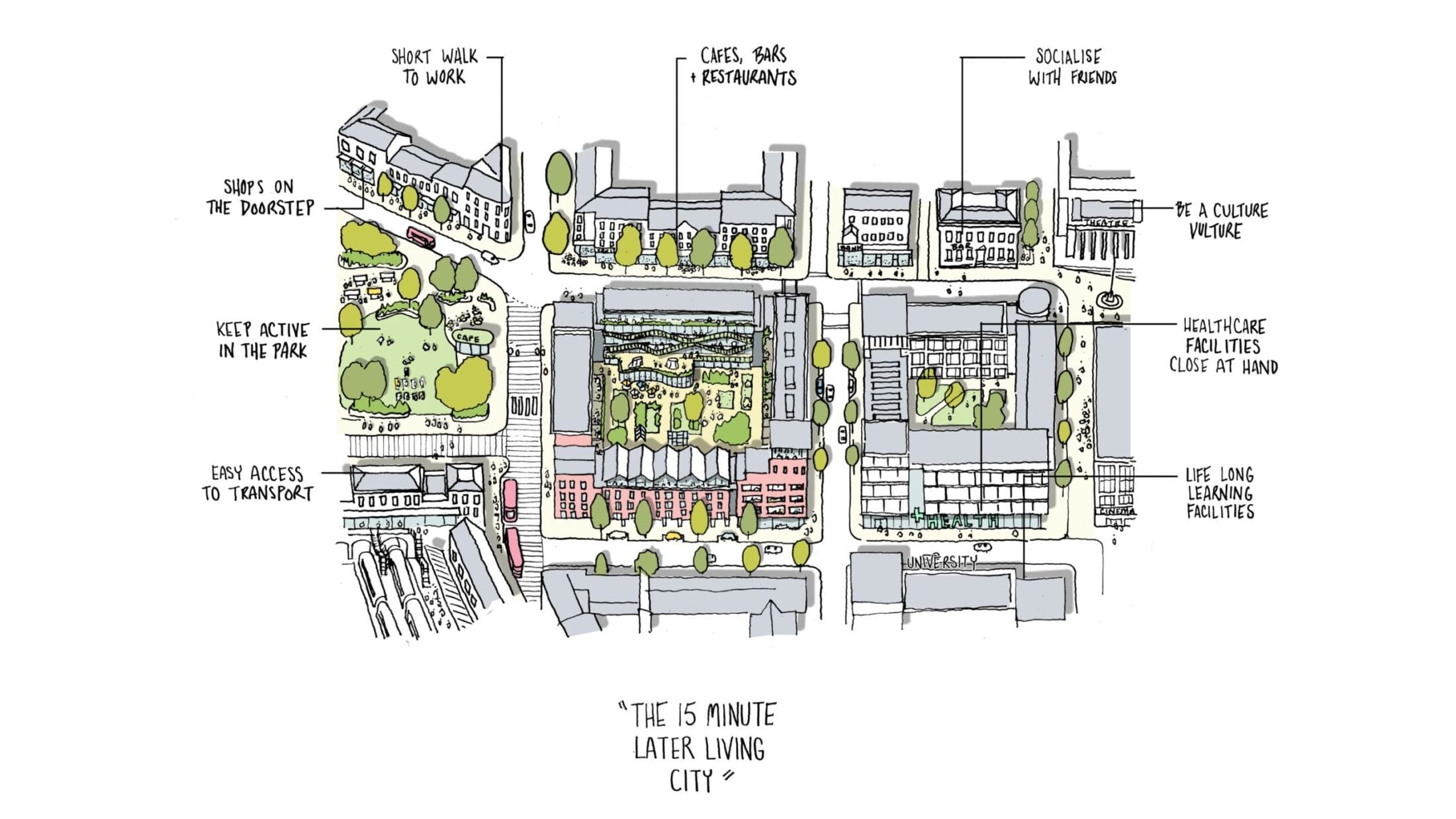
A sense of community ownership remains one of the most powerful tools in the arsenal of urban renewal. Yet, despite its significance, our strategies often overlook an ever-growing part of the population: our aging demographic. We believe that this oversight presents an extraordinary opportunity, one that could transform town centres into thriving hubs of health, inclusivity, and community connection.
The realities of today’s urban environment demand innovation. The traditional retail-focused town centre is no longer viable. While coffee shops and retail conversions might plug some gaps, they do not provide the robust, community-centric solutions needed for sustainable renewal. That’s why we have collaborated with local authorities to adopt a diverse approach: blending healthcare, workspace, community, and civic spaces. A central concept of this strategy is the ground floor ‘living room,’ a space designed for connection and co-working, seamlessly integrating local businesses, residents, and workers.
But what if we went further? Imagine a town centre not as a cluster of separate buildings but as an interconnected “living room, dining room, and study” for an engaged and diverse community. This multi-purpose model could attract people across generations, ensuring the town centre’s vitality even during quieter periods. Older residents, in particular, could find renewed independence and purpose while reinforcing a sense of shared ownership vital for urban renewal.

Later Living, But Not as You Know It
Later Living is uniquely positioned to drive this vision forward. Far from the outmoded, insular models located on city fringes, we envision Later Living communities that are fully integrated within town centres. By supporting inclusivity and independence, these communities have the potential to shatter outdated perceptions and bring profound benefits.
Currently, much of the later-living market operates on enclosed environments that, while appealing to some, often sacrifice a sense of autonomy. This design choice poses barriers to ‘rightsizing,’ as older residents are hesitant to relinquish independence by moving out of family homes. The knock-on effect is a strain on both the housing market and healthcare systems. We need a model that not only acknowledges but actively celebrates the independence of our older populations.
Our vision is clear: by co-locating Later Living developments with town centres, we can provide the perfect balance of support and independence. Rather than packing amenities into isolated sites, this approach would encourage residents to embrace the existing shops, services, and social spaces as extensions of their own homes. Strategic collaborations with local businesses would create a symbiotic relationship, ensuring the vitality of the town centre and empowering older residents to stay engaged with their wider communities. Importantly, healthcare facilities within these communities could be designed to serve both older and younger generations, fostering multi-generational integration and collaboration.
Reimagining Later Living: Location, Perception, Collaboration
Location and accessibility are fundamental to changing the narrative of Later Living. Town centres are ideal, but they require an entirely new approach. Developments must prioritize activation and interaction rather than retreat into isolation. Planners and stakeholders must be convinced that Later Living can not only co-exist with but also enhance the dynamism of town centres.
Perception is equally critical. To entice younger generations to see Later Living as a desirable option and erode the stigma surrounding it, we must rethink what these communities offer. Design, amenities, and messaging should focus on fostering inclusivity, independence, and opportunity rather than addressing perceived vulnerabilities.
Finally, true collaboration is key. Only through joint efforts between developers, local authorities, businesses, and residents can we create multi-generational environments that sustain urban renewal. This collaboration is essential to recognizing the value of older generations as a resource rather than a challenge.
When done right, Later Living can transform town centres from additional assets into essential infrastructure, driving urban renewal and health equity. By empowering aging populations to live fully integrated and independent lives, we can create vibrant, sustainable, and inclusive communities that benefit all generations. Let’s work together to build towns and cities that embrace every stage of life.
